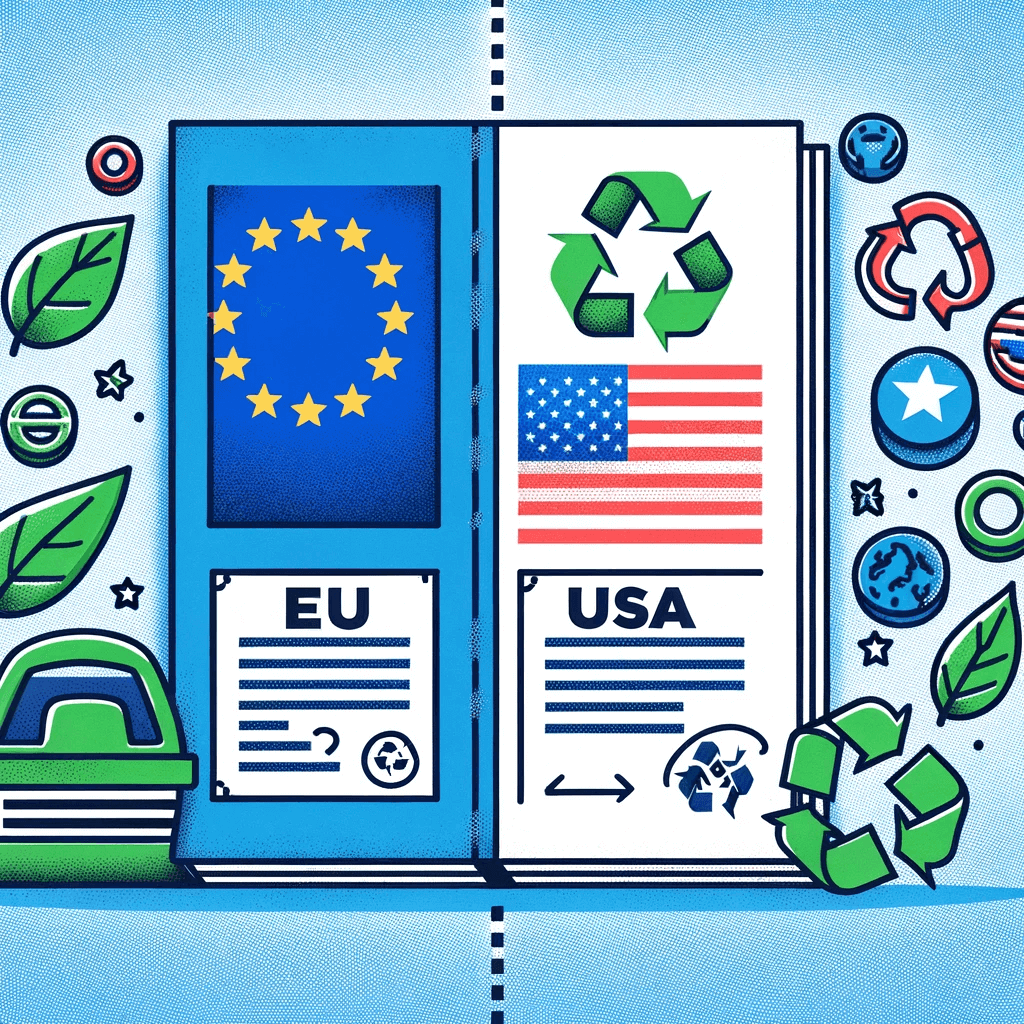
EPDs: What’s the difference between the EU and USA?
If you’re importing European building products to the U.S., this comprehensive guide is tailored just for you. We understand that grasping the nuances of Environmental Product Declarations (EPDs) and different methodologies can be quite a challenge. So, let’s break it down in a way that’s both informative and easy to digest.
EPDs Basics
An EPD is like a report card for a building product, detailing its environmental impact. These are crucial in the construction industry, especially when we talk about sustainability and green building standards.
The American Way: TRACI Methodology
In the U.S., we use the TRACI (Tool for the Reduction and Assessment of Chemical and Other Environmental Impacts) method. Developed by the U.S. Environmental Protection Agency, TRACI focuses on specific impact categories like air pollution, water usage, and more. It’s tailored for the American environment and regulations.
The European Approach: CML and PEF
Across the pond in Europe, they use two different methodologies: CML and PEF. The CML (developed by the University of Leiden) is comprehensive, covering a wide range of environmental impacts. The PEF (Product Environmental Footprint) is another European method that’s quite detailed and aligns with specific European standards.
When a European product comes to the U.S., its EPD, which might be based on CML or PEF methods, doesn’t directly translate to the American TRACI standards. This is crucial because the U.S. building industry and regulations often require information specific to the American context.
The Role of ISO Standards
ISO standards, like ISO 14025 for EPDs and ISO 14040/14044 for Life Cycle Assessment (LCA), provide a global framework. These standards ensure that whether in Europe or the U.S., there’s a level of consistency in how we report and assess environmental impacts.
Life Cycle Stages: A1 to A4
When dealing with EPDs, understanding the life cycle stages A1 (Raw Material Supply), A2 (Transport to Manufacturer), A3 (Manufacturing), and A4 (Transport to Construction Site) is vital. These stages detail the journey of a product from the extraction of raw materials to its arrival at the construction site, each playing a significant role in determining the product’s overall environmental impact.
Why a U.S.-Specific EPD is Needed
Here’s the catch: A European EPD might not fully meet U.S. regulatory standards or market expectations. American clients and industry professionals look for data that’s relevant to the U.S. scenario. This includes factors like local environmental impacts, resource consumption, and waste generation.
Adapting a European EPD for the U.S. market isn’t a walk in the park. It requires a deep dive into American environmental standards, market needs, and regulatory requirements. This might mean additional research and analysis to align the product’s environmental profile with U.S. conditions.
The Consultant’s Role: Bridging the Gap
As a sustainability consultant, the goal is to guide manufacturers through this adaptation process. This involves aligning the product’s environmental profile with U.S. standards, ensuring compliance, and making the EPD relevant and marketable in the U.S.
Strategic Adaptation for Market Success
For European building product manufacturers eyeing the U.S. market, adapting their EPDs to meet American standards is a strategic move. It’s not just about compliance; it’s about making the product appealing and credible in the U.S. market. As consultants, our role is to navigate these complex waters, ensuring that European products can successfully meet the unique demands of the American market.
Remember, in the ever-evolving world of building and sustainability, staying informed and adaptable is key to success. I hope this guide helps you confidently navigate the differences in EPD methodologies and make informed decisions about importing European building products to the U.S. marketplace.
